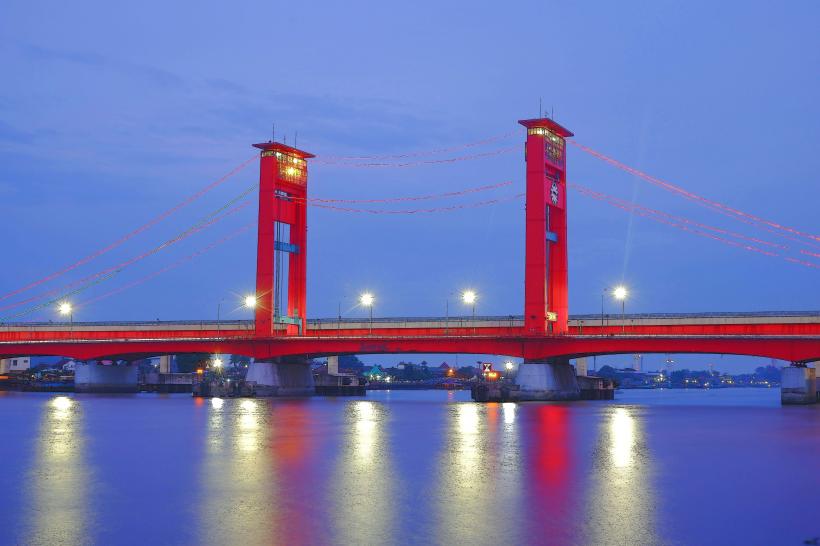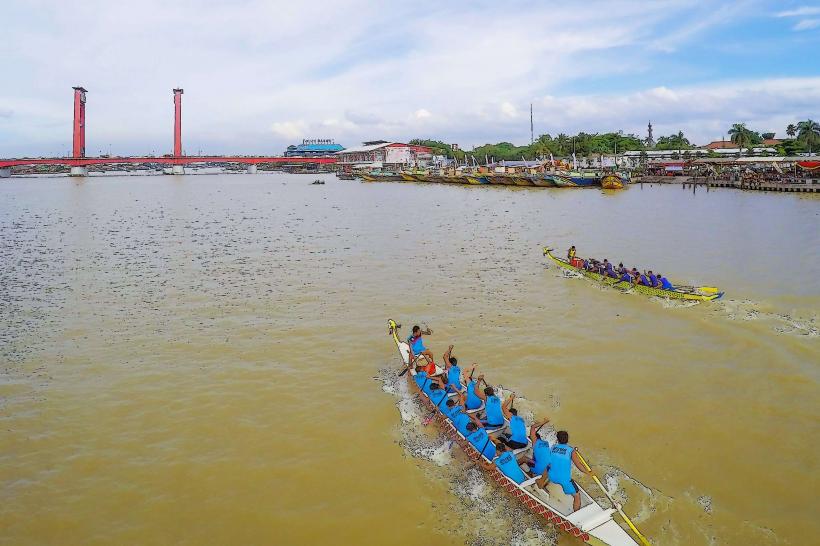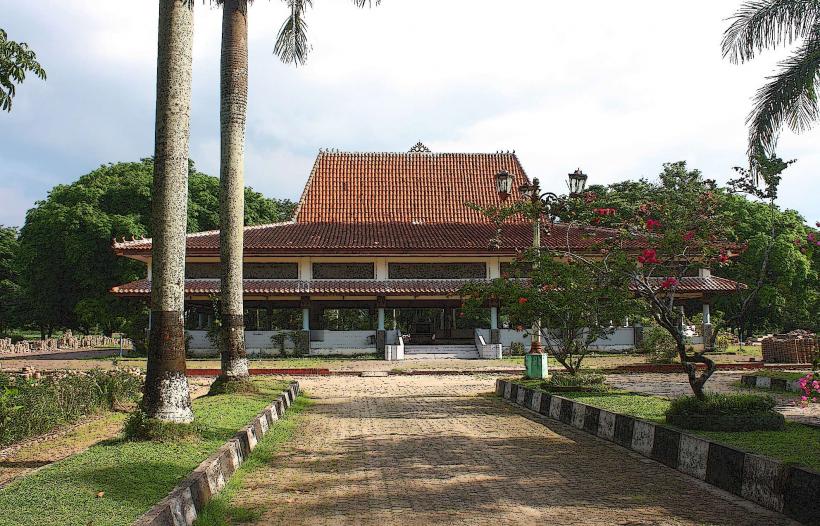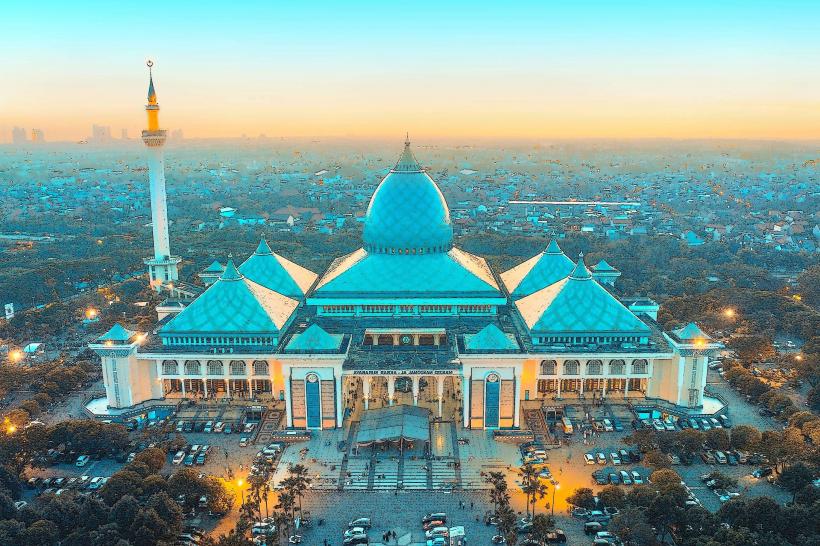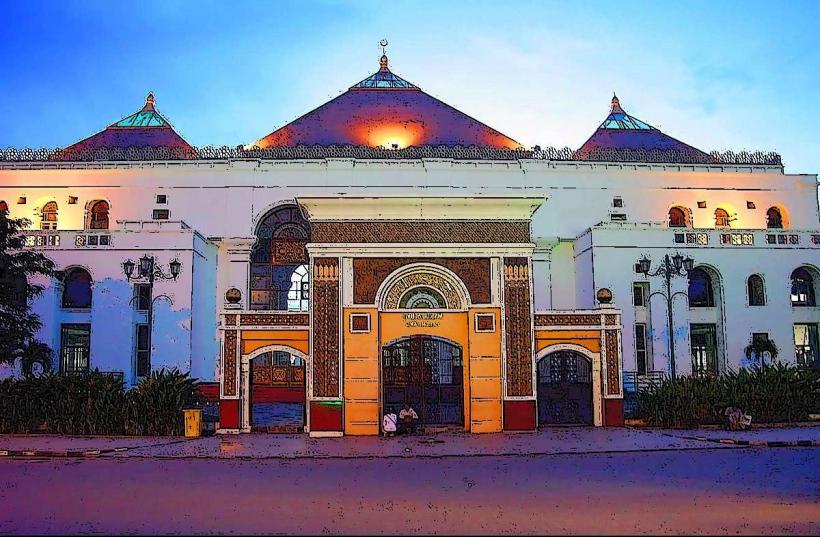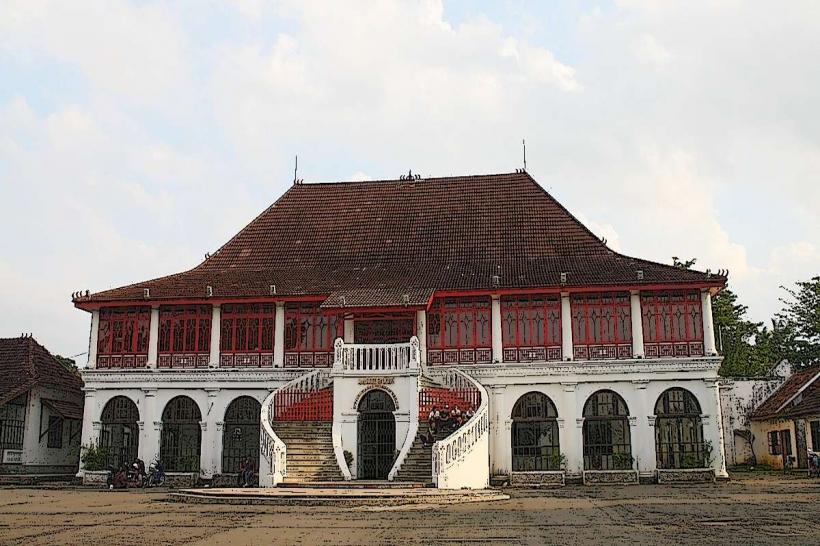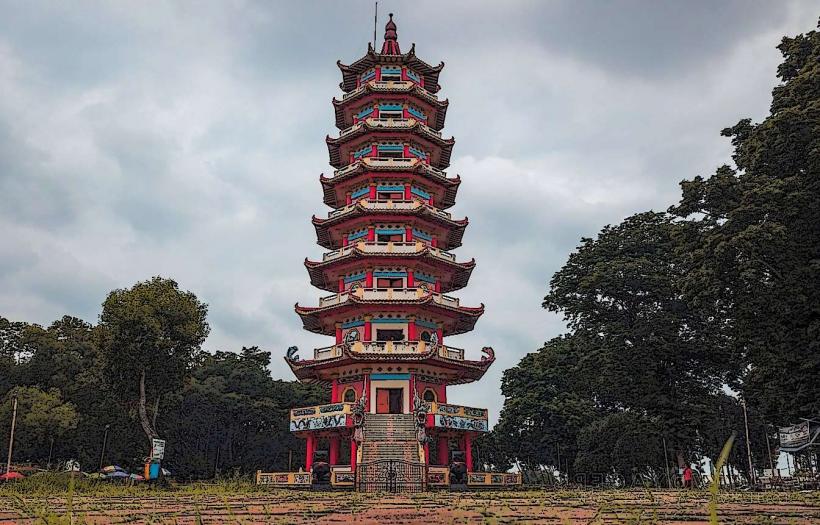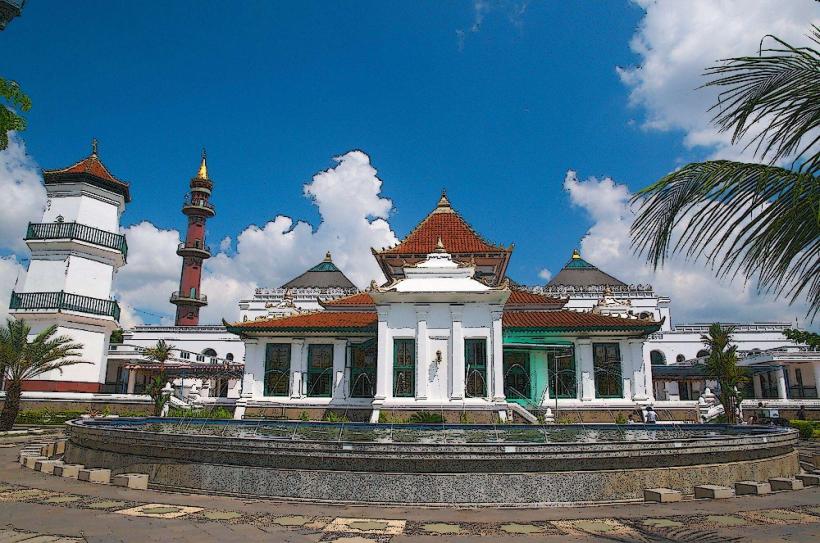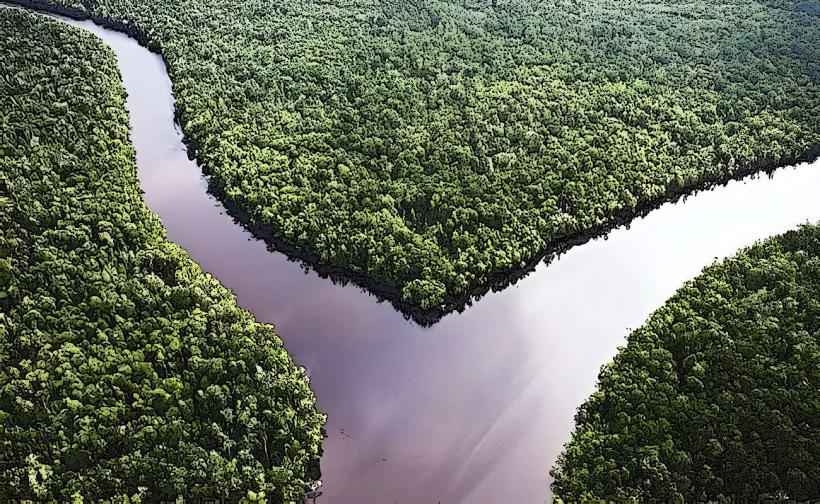Information
Landmark: Taman PurbakalaCity: Palembang
Country: Indonesia
Continent: Asia
Taman Purbakala Kerajaan Sriwijaya (Sriwijaya Kingdom Archaeological Park)
Taman Purbakala Kerajaan Sriwijaya, also known as the Sriwijaya Kingdom Archaeological Park, is a historical site and cultural park located in Palembang, South Sumatra, Indonesia. The park commemorates the ancient Sriwijaya Kingdom, a powerful maritime empire that dominated much of Southeast Asia from the 7th to 13th centuries. It serves as both a tourist attraction and a significant archaeological site for exploring Indonesia's rich history.
Key Highlights of Taman Purbakala
1. Historical Background
- Sriwijaya Kingdom:
- The Sriwijaya Kingdom was a major center of Buddhism and a thriving maritime empire controlling trade routes across the Strait of Malacca and the South China Sea.
- The kingdom’s strategic location made it a hub for international trade, cultural exchange, and the spread of Buddhism.
- Rediscovery:
- The site was rediscovered by archaeologists in the 20th century and is believed to be the center of the ancient kingdom.
- Excavations have uncovered artifacts, canals, and other remnants of the empire's advanced infrastructure.
2. Location and Layout
- Location: Situated in the Karanganyar area, about 4 kilometers west of the city center of Palembang.
- Size: The park spans 80 hectares, encompassing archaeological remains, waterways, gardens, and open spaces.
- The site is designed as a combination of a museum, archaeological reserve, and recreational park.
3. Main Attractions
a. Archaeological Remains
- The site includes remnants of ancient canals, ponds, and settlements, reflecting the sophisticated water management system of the Sriwijaya Kingdom.
- Stone inscriptions and Buddhist relics have been discovered, offering insights into the kingdom’s history, culture, and religion.
b. Replica of the Kedukan Bukit Inscription
- A replica of the Kedukan Bukit Inscription, dated 683 CE, is on display. The inscription is one of the oldest records of the Sriwijaya Kingdom and describes the founding of a settlement and military expeditions.
c. Museum Sriwijaya
- Located within the park, the Sriwijaya Museum houses artifacts unearthed during excavations, including:
- Pottery, ceramics, and tools.
- Buddhist statues and stupas.
- Maps and diagrams explaining the kingdom’s extensive trade network and influence.
d. Artificial Lake and Canals
- The park features an artificial lake inspired by the ancient Segaran Lake, believed to have been a recreational space for the Sriwijayan elite.
- Visitors can stroll along the canals, which replicate the water system used for transportation and irrigation.
e. Buddhist Influence
- The site highlights the Buddhist heritage of Sriwijaya, including a small reconstructed stupa and other symbolic elements.
f. Gardens and Open Spaces
- Beautifully landscaped gardens and shaded walkways make the park a relaxing place for families and history enthusiasts alike.
4. Cultural Significance
- Symbol of Indonesian Heritage:
- The park celebrates the legacy of Sriwijaya, emphasizing its contributions to regional trade, cultural exchange, and the spread of Buddhism.
- Educational Value:
- It serves as an open-air classroom for students, historians, and archaeologists, offering a glimpse into ancient Southeast Asian civilizations.
5. Visitor Experience
Activities:
- Historical Exploration:
- Explore the ruins, canals, and museum exhibits to learn about the Sriwijaya Kingdom.
- Photography:
- The picturesque landscapes and historical artifacts provide excellent photography opportunities.
- Guided Tours:
- Visitors can hire guides for detailed explanations of the site’s history and significance.
- Family Recreation:
- The park is family-friendly, offering open spaces for picnics and leisure.
Accessibility:
- The site is easily reachable by car or public transportation from Palembang city center.
- Parking facilities and walking paths are available.
6. Practical Information
- Location: Jalan Syakyakirti, Karanganyar, Gandus District, Palembang, South Sumatra, Indonesia.
- Opening Hours:
- Daily from 8:00 AM to 5:00 PM.
- Entrance Fee:
- Modest entry fees apply, often including access to the museum.
- Facilities:
- On-site facilities include parking, restrooms, a souvenir shop, and food stalls.
7. Nearby Attractions
- Kemaro Island: A small island in the Musi River, steeped in Chinese and local folklore.
- Ampera Bridge: A famous landmark offering stunning views of the Musi River.
- Sriwijaya Kingdom Museum: A separate museum located in the city, focusing on the broader history of the kingdom.
8. Best Time to Visit
- Dry Season:
- The best time to visit is during the dry season (May to September) for pleasant weather and easier exploration.
- Morning or Late Afternoon:
- Cooler temperatures and softer light make these times ideal for a visit.
9. Preservation Efforts
- The Indonesian government and local authorities are actively working to preserve the site, promote archaeological research, and enhance its role as a cultural tourism destination.
- Visitors are encouraged to respect the site by following designated paths and avoiding damage to historical remains.
10. Conclusion
Taman Purbakala Kerajaan Sriwijaya is a must-visit destination for history enthusiasts, offering a unique glimpse into the grandeur of the Sriwijaya Kingdom. The park’s combination of natural beauty, historical significance, and cultural attractions makes it a standout landmark in Palembang. Whether you're interested in ancient civilizations, archaeological discoveries, or simply seeking a serene environment, this park provides a meaningful and enriching experience.

